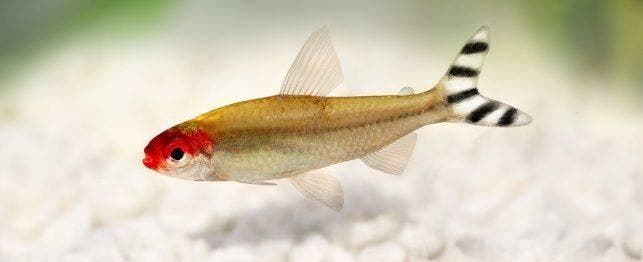
Choosing Tetras
Small, hardy, colored in iridescent rainbow hues, a flashing school of tetras enlivens any freshwater aquarium. Although they range in size from 1 inch to 5 inches, tetras are in the same Characin family as many hundreds of Central and South American and African fishes that includes piranhas and tigerfish. All have toothed jaws and usually a small, second dorsal fin called the adipose fin on their backs. They are also egg-layers.
Black, Neon, Silver, Golden
In the aquarium store you will see dozens of species with names as enticing as their colors. The mainstay of the trade is the neon tetra, a peaceful fish that, like all the tetras, does best in a school of at least five or six. Their lateral stripe running from head to tail, a distinctive tetra marking, is silver, and its underside and tail are bright red. The cardinal tetra, a close relative, has an iridescent blue stripe from eye to tail, a thick, bright red stripe below. The golden tetra is all gold with a black tail. The related glowlight tetra has red lateral stripes from head to tail with red spots on on fins.
These and others of the group are some of the popular fish in the aquarium trade. They also include what are called head and tail lights, hatchetfish, the transparent X-ray fish, and any of the various pencilfish.
Care and Feeding
The tetras are all omnivorous. In the slow moving streams in which they live they feed on small insects and crustaceans, plants and worms. The same can be fed in the aquarium, although all do well on dried flake food. When you sprinkle the food into the aquarium the school will flash toward it, break apart to eat, and then reform. Since few of the tetras grow larger than 2 inches, a school of them do fine in even a 10-gallon community aquarium. All do well with the tank temperature of around 75 degrees Fahrenheit. They like low light and a well-planted aquarium, with water slightly soft and slightly acidic, say a pH of 5.5 to 7.5.
Breeding
Tetras are fairly easy to breed and for most of them, the softer and more acidic the water – you can add some peat to the breeding tank to accomplish this – the more likely they are to produce eggs and young. Females scatter their eggs throughout the tank, so use a box, rather than a power filter in the tank. After spawning, remove the parents. The eggs hatch within 24 to 48 hours.